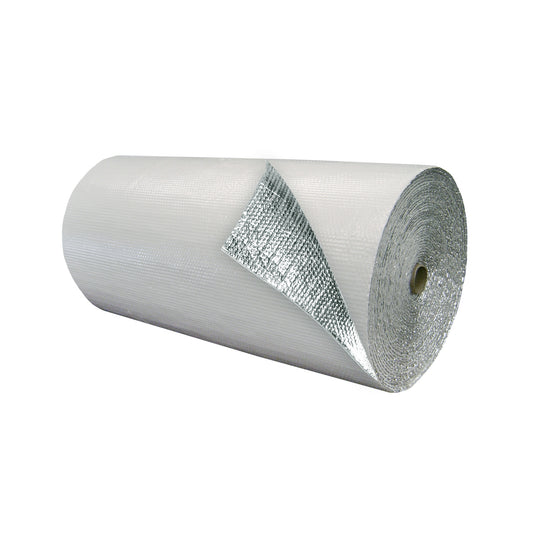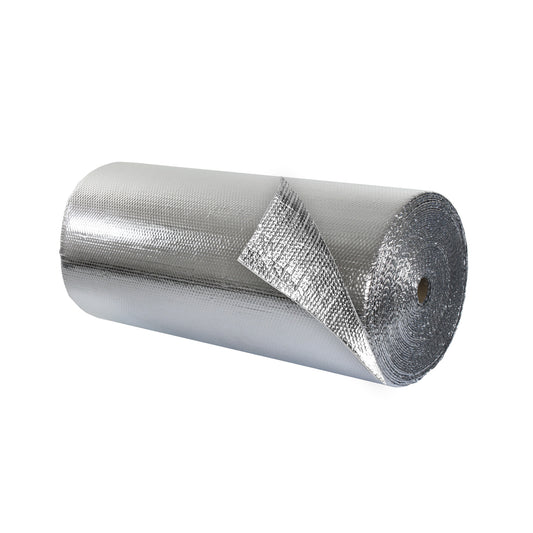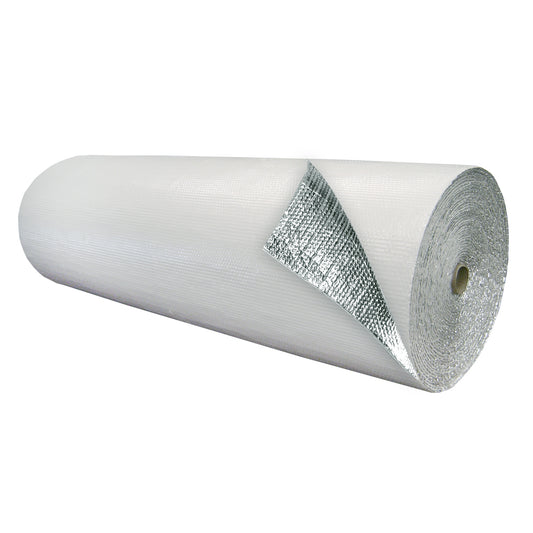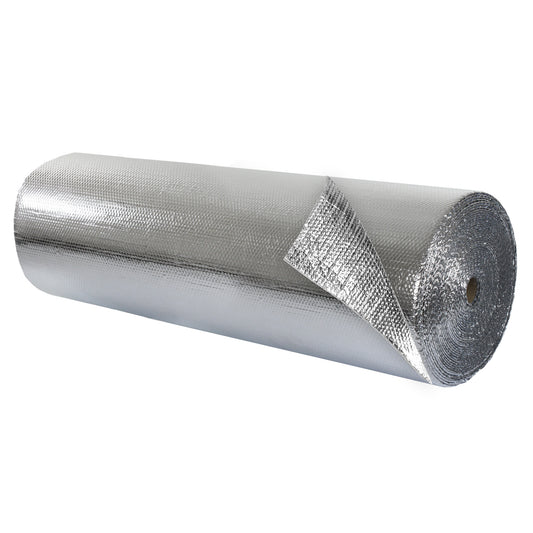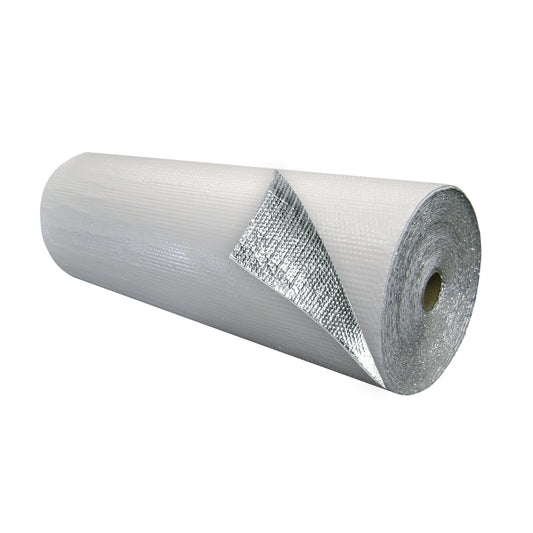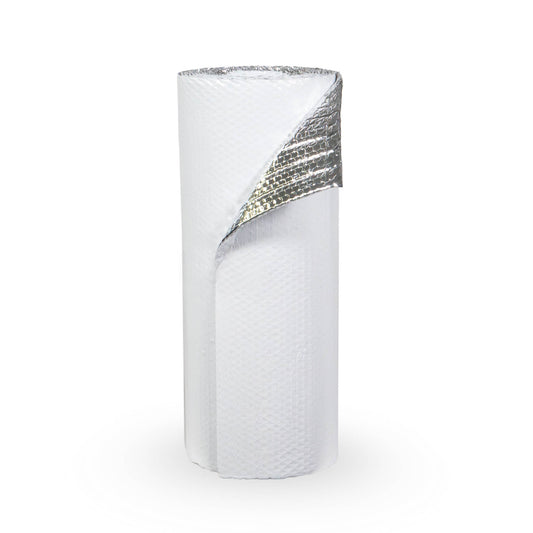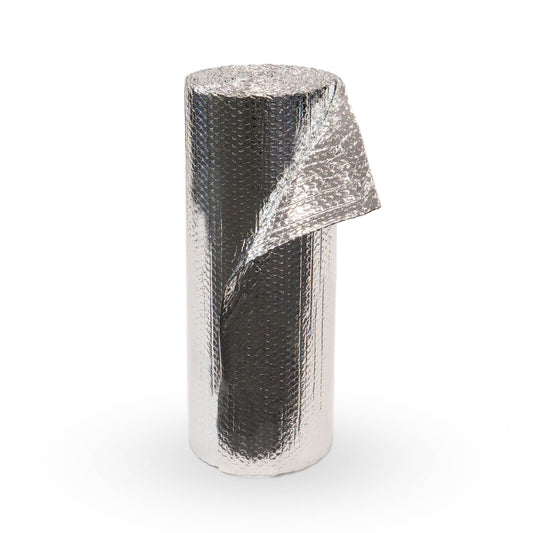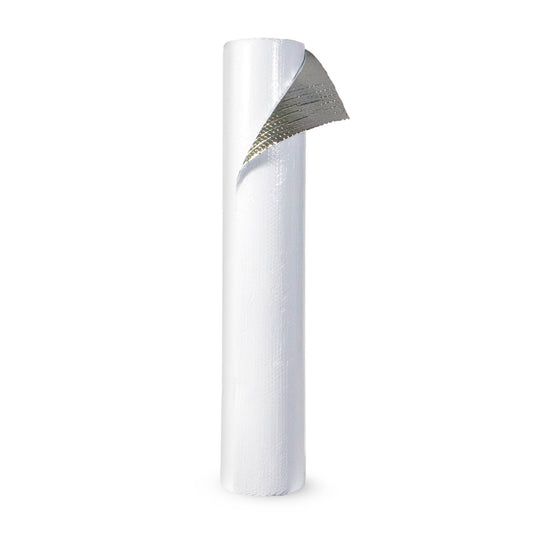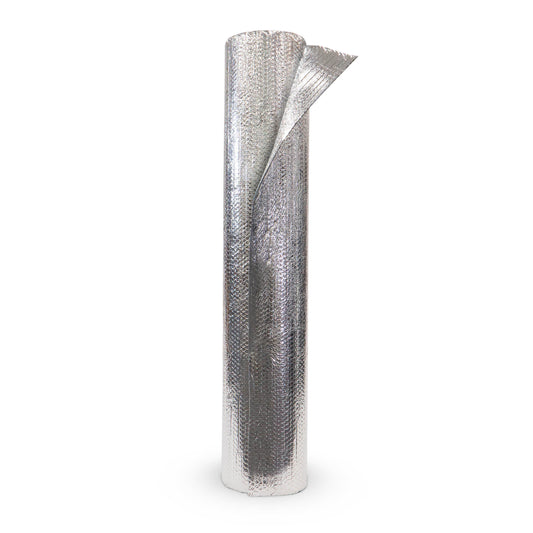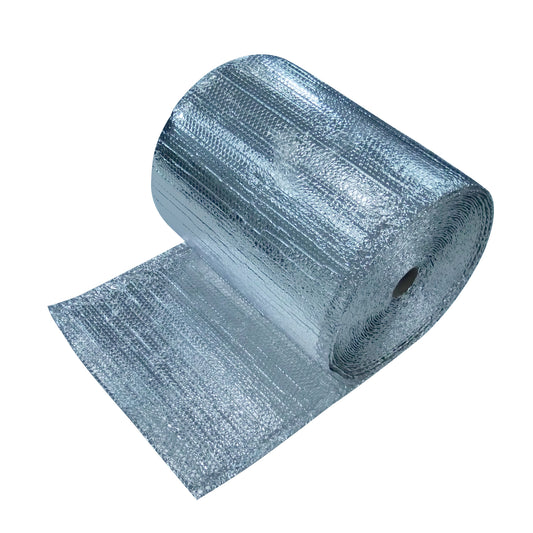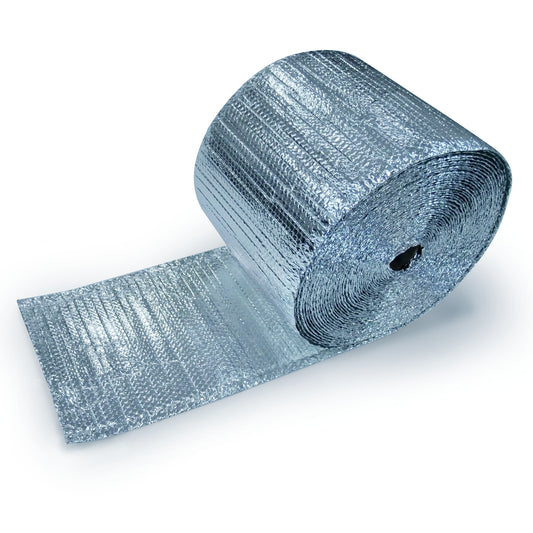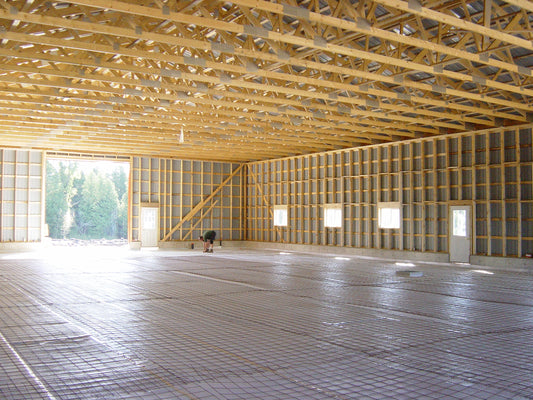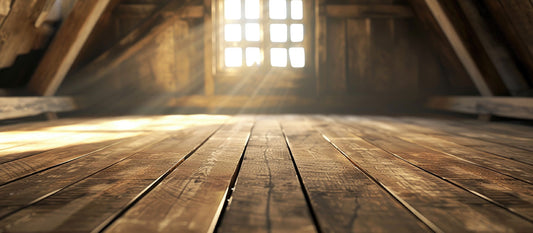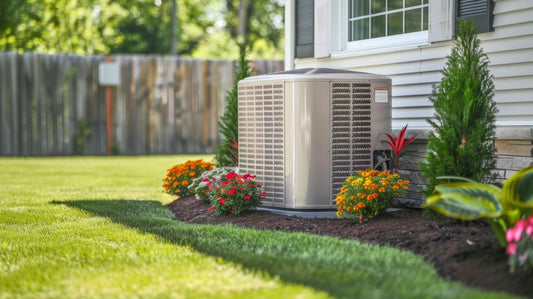
Depending on your project, we offer both double bubble and single bubble foil products to our customers. Now, you might be wondering, "What is the difference between double bubble and single bubble, and why does it matter?"
Our customers have frequently asked the same question, unsure of which one works best for them. The difference between the two is simple; however, the 'why it matters' depends on what application you need it for. Both single and double bubble can be used interchangeably for the most part, but emphasis on using one over the other in different situations means more efficiency for your home or building, and less worrying about issues down the road.
What's the difference between single bubble and double bubble insulation?
To answer this question, we need to take a look at how the bubbles function in the insulation.

Bubbles are filled with air, which makes an incredible insulator because it provides a barrier to keep the heat from transferring from one material to another. Some common items in our everyday lives that use air for insulation are coffee mugs, double pane windows, and thermoses. This phenomenon is also what prevents condensation from forming.
Our bubble foil insulation products are composed of a single or double layer of polyethylene bubbles separating two exterior layers of metalized reflective foil. The polyethylene creates the barrier necessary for the foil layers to be effective in reflecting both heat and water vapor.
As the names suggest, our single bubble insulation has one layer of bubbles while our double bubble insulation has two layers of bubbles. The difference? The double bubble layer provides additional space for the two foil layers, increasing their effectiveness and reducing radiant heat transfer even more.
When Should I Use Single Bubble Foil?
While many people will suggest using double bubble foil for almost all insulation projects, in certain cases single bubble foil will also do the trick. There are a couple reasons single bubble foil insulation could work better than double:
-
Thickness: Single bubble foil measures 1/8-3/16" in thickness, making them ideal for tight and narrow spaces requiring insulation. This is in comparison to the double bubble foil, which measures 1/4-5/16", proving to be too thick in these situations.
-
Temporary: Some instances only require temporary insulation, in which the foil can be removed and used again later. Single bubble foil provides thin insulation that's both effective and a cheaper alternative for these uses.
- Flexibility: Going off of temporary usage, single bubble foil's thin composition makes it much more flexible to be reused in other temporary applications beyond its initial usage.
Single bubble foil insulation can be used for a variety of smaller-scale projects, like:
- Dog Houses
- Hot Water Tanks
- Produce Boxes
- DIY Projects
- Windshield Protector
It can also be used in larger applications, like:
- Attics
- Crawl Spaces
- Vehicles
- Other Large-Scale Building Insulation
Ideally, customers should use the best possible products for different applications (e.g. radiant barrier foil insulation for attics), but single bubble foil insulation will work great in these spaces, too.
When Should I Use Double Bubble Foil?
For most long-term applications, double bubble foil insulation is going to be the better option to use. Because of the double layer of polyethylene bubbles, double bubble insulation provides the most effective thermal break, making it harder for radiant heat to transfer through than with single bubble insulation. This is especially important if you are constructing new buildings and putting in insulation from the start. The extra layer of bubbles further reduces condensation or frost that tends to form when the variance in temperature on either side is more extreme.
You can use double bubble foil insulation for different large-scale construction projects, like:
As stated before, there are other insulation products used solely for specific applications, but double bubble foil acts as a great alternative for large-scale constructions in instances when these aren't available.
You can benefit from using single or double bubble foil for any of your home projects. While single bubble foil works better for smaller and temporary applications, and double bubble foil is recommended for larger and long-term ones, these products can ultimately be used interchangeably, depending on what you feel is best for you situation.

More Articles You May Like:
Installing Radiant Barriers: The Importance of Air Space
How to Combine Fiberglass with Bubble Insulation in a Wall
What Tools Do I Need to Install Reflective Insulation?
Still have questions? Talk to the experts! Email us or by calling 888-349-3645 for all your inquiries.


